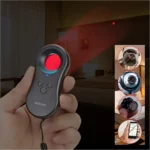If you want better security for your home but are overwhelmed with the options, this beginner’s guide will walk you through the key choices – from equipment to monitoring services – so you can create a reliable alarm system tailored for your needs and budget.
Let’s start with the basics…
Alarm systems contain various sensors that detect intrusions, fires, carbon monoxide and other hazards. When triggered, these sensors alert you and/or professional monitoring services so action can be taken.
Having alarm system signage and window stickers alone acts as a deterrent, making burglars think twice before targeting your home. The loud sound emitted from the siren also scares away intruders.
Key Components of a Home Alarm System
A typical home alarm system consists of:
- Control panel – The brains of the system. It receives signals from sensors and triggers alarms. Can sound sirens, call authorities and send notifications.
- Motion sensors – Detects movement and occupancy violations in protected rooms. Allows arming rooms separately.
- Door/Window sensors – Wired or wireless detectors that trigger when doors or windows are opened.
- Environmental sensors – Detect issues like smoke/CO, water leaks, and extreme high/low temps.
- Keypad – LCD touchscreen panel for arming/disarming the system and changing settings.
- Alarm sounder – Loud siren that deters intruders when system is triggered.
- Signage – Yard signs and window stickers warning intruders of the alarm system.
With these core components installed properly, your home gains 24/7 monitoring and protection.
Wired vs Wireless: Making the Right Choice
Alarm systems come in wired and wireless versions:
Wired – Sensors connect to the control panel via physical wires. More reliable with no interference but complicated install.
Wireless – Sensors use radio signals to talk to the panel. Much easier for DIY but prone to connectivity issues.
Hybrid – Uses wired for key sensors like entry doors while wireless handles spot like windows. Balance of reliability and simplicity.
I recommend wireless for DIY installs. But evaluate your home layout carefully – wired provides maximum reliability for large or complex setups.
Self-Monitoring vs Professional Monitoring
Another big decision – self-monitoring or having a pro service watch for alerts:
Self-Monitoring – System alerts you via sound, app notifications or emails. No monthly fees but responsibility is on you.
Professional Monitoring – A 24/7 watch center monitors alerts and dispatches help if needed. Peace of mind but ongoing fees apply.
Smart Home Monitoring – Amazon Alexa Guard and Apple HomeKit offer basic self-monitoring via voice assistants and cameras.
I suggest professional monitoring for most homeowners. Having backup while you’re sleeping or away is invaluable. But apps provide more monitoring flexibility and avoid monthly costs.
Installation Tips
Installing your alarm system properly ensures maximum protection. Here are some tips:
Mapping – Walk through your home indicating ideal sensor locations on a sketch. Also note any WiFi dead zones.
Sensor Placement – Cover every exterior door and ground floor window. Motion sensors in hallways, staircases, living spaces.
Power – Wireless sensors just need batteries. But wired sensors and the siren need permanent power sources.
Signage – Place window stickers and yard signs prominently to act as deterrents.
WiFi/Cellular – If your system has cellular or WiFi connectivity, ensure adequate signal coverage from your router.
Taking time to map out locations and test connectivity helps avoid issues down the road. Consider pro assistance if you’re not technically inclined.
Alarm Monitoring Services
Going with professional monitoring provides expert backup:
Alarm Dispatch – Monitoring center calls authorities if a security issue is confirmed.
Video Verification – Your security cameras allow visual verification before police are called, preventing false dispatches.
Notifications – Get real-time smartphone alerts on alarm events like doors opening.
Emergency Monitoring – Some services monitor panic pendants and dispatch aid for medical emergencies.
Pro monitoring brings peace of mind that someone is always watching with priority police dispatch. Worth the monthly fee for most homeowners.
Is It Time for a Home Alarm System?
Hopefully this home alarm system beginner’s guide gave you a good overview of the options. The key takeaways:
- Any alarm is better than no alarm – visible deterrents protect your home.
- Wireless systems are ideal if you plan to self-monitor.
- Professional monitoring brings 24×7 support but adds monthly costs.
- Proper sensor setup protects entry points, rooms with valuables.
- Take time to map locations and test connectivity before installing.
Protecting your family and home is priceless. With modern DIY systems, reliable protection is affordable for all budgets. Let me know if you have any other home alarm questions!
Here are some recommended home alarm system products on Amazon that I can include in the article:
Recommended Alarm Systems on Amazon
If you’re ready to add a home alarm system, here are some top-rated options available on Amazon:
Ring Alarm 5 Piece Kit – $199
- Complete starter kit with motion sensor, range extender, keypad, contact sensor
- Easily expandable, integrates with Ring cameras
- Optional professional monitoring for $10/month
SimpliSafe 9 Piece Wireless System – $229
- Award-winning DIY system with motion and entry sensors
- No contracts, cancel monitoring at anytime
- Whole home protection with room for expansion
Abode Home Security Kit – $279
- Customizable starter system with window sensor, motion sensor, key fob
- Works with Alexa, Google Home, Nest, Ecobee
- Can self-monitor or enable professional monitoring
ADT Self Set Up Alarm Keypad – $89
- 7-piece wireless setup from top provider ADT
- Customizable with cameras, smoke detectors, carbon monoxide sensors
- Get $100 off installation fees if adding monitoring
Hope this gives you some reliable alarm system options to protect your home! Let me know if you would like me to modify or add anything to this recommendations section.



